Making Nothing Out of Something / Fare niente da qualcosa
Lexicon
June 16, 2019artist contribution,
This lexicon is a collaborative textual and visual work composed of contributions by the participants of the Open! COOP study group Making Nothing Out of Something: Improvising Writing and Publishing in Relation to Practices of Resistance. The study group – part of DAI Roaming Academy 2018–2019 – took improvisation as the substantive starting point for both making and thinking. Improvisation was reflected about and embodied as generative and relational, and as a catalyst for artistic and social experiment and practice, specifically experimental writing and publishing.
How do we enter into an improvisation and how does the improvisation become recognizable (or does it ever become recognizable) as a work (of art) (schöne Kunst)? What if we refuse the distinction between fine art and handiwork, Monk’s dissident elbow work, the imposition of position in his halthing dance, its extended recursion and still moving? What if practicing, what if the practice of art, is improvisation’s continual breaking and making of the rule of art, in jurisgenerative refusal, in official recusal, in the continual putting into play, of the very idea of the work of art?
— Fred Moten, ‘Blackness and Poetry’, Evening Will Come: A Monthly Journal of Poetics, no. 55 (July 2015)
Examining improvisation in relation to power and aesthetics in particular, the research focused on the improvisational nature of struggle and activism. With guest tutor Werker Collective, the study group’s making activities especially related to self-organization and anarchist and activist publishing – Antonio Gramsci’s in particular – as expressed in historical and current protest movements.
We were also highly inspired by the discourses on improvisation generated by poet, scholar and free music lover Fred Moten and his fellow thinkers. Moten’s theoretical and poetic work consistently and radically explores the entanglement of language, music, performance, improvisation and the black radical aesthetic in social life. Regarding improvisation as ‘a response to a necessity, the necessity to act in favor of freedom’, Moten calls improvisation, in his recent book The Universal Machine (2018), ‘a movement; a dehiscence; a quickening’.
The Making Nothing Out of Something / Fare niente da qualcosa lexicon wants to be a quickening, proposing alternative becomings and subjectivities. The writing and reading break open narratives and subject matters, setting things into movement, offering an improvisational space in which different voices and imaginaries converge, sound together, go apart, come back together.
Appropriation
Nine Postma

Strange fruit hanging from the poplar trees1
Blood on the leaves
I just need to clear your mind now2
It’s been racin’ since the storyline
Now I’m holdin’ down the story now
And all I am I what I can buy now
Cause I ain’t got the stuff on me right now
And I thought you would wait
Yeah I thought you would wait
So I’mma be a little more shy now
Cause I ain’t got the photos of me right now
And I thought you would wait
Yeah I thought you would wait
These pictures surroundin’ me
All know nothin’ of me
Then they talk about me
For I am lost without me
I could have been somebody
Thought you’d know about me
Now I know I am not it
So just go on with it
I could have been somebody
Instead you had to show my body
Let’s go back to the first start here
Where you found out about me
Shared a photo of my body
Shared a photo of my body
Showed them to anybody
And you asked them please know she
Before the searchlight tore ya
Before the searchlight found ya
Remember I was once young
Who would I hold then
Before this story?
In 1937 the poem ‘Bitter Fruit’ was written by Albert Meeropol, a Jewish teacher from the Bronx. He translated it into a song called ‘Strange Fruit’ and asked Billie Holiday to sing it, which she did the following year. The song protests against American racism, in particular the lynching of African Americans. Various artists covered it. Nina Simone’s 1965 version is sampled in Kanye West’s ‘Blood on the Leaves’, the seventh track on Yeezus (2013). In February 2019 an elderly woman was found on the streets of Utrecht. She died there after several CPR attempts. Nobody claimed her as a loved one and her identity was unknown. The police disseminated a photograph of her belongings online. Still, nobody came forward, so the police took a photograph of the face of the deceased woman, and shared this as well. I appropriated ‘Blood on the Leaves’ by changing its lyrics to fit the case of this woman.
Articulation
Wilf Speller

An improvised spoken word text on the potential of the voice for articulating new worlds. Listen here.
Beginning and Next
Sara Benaglia
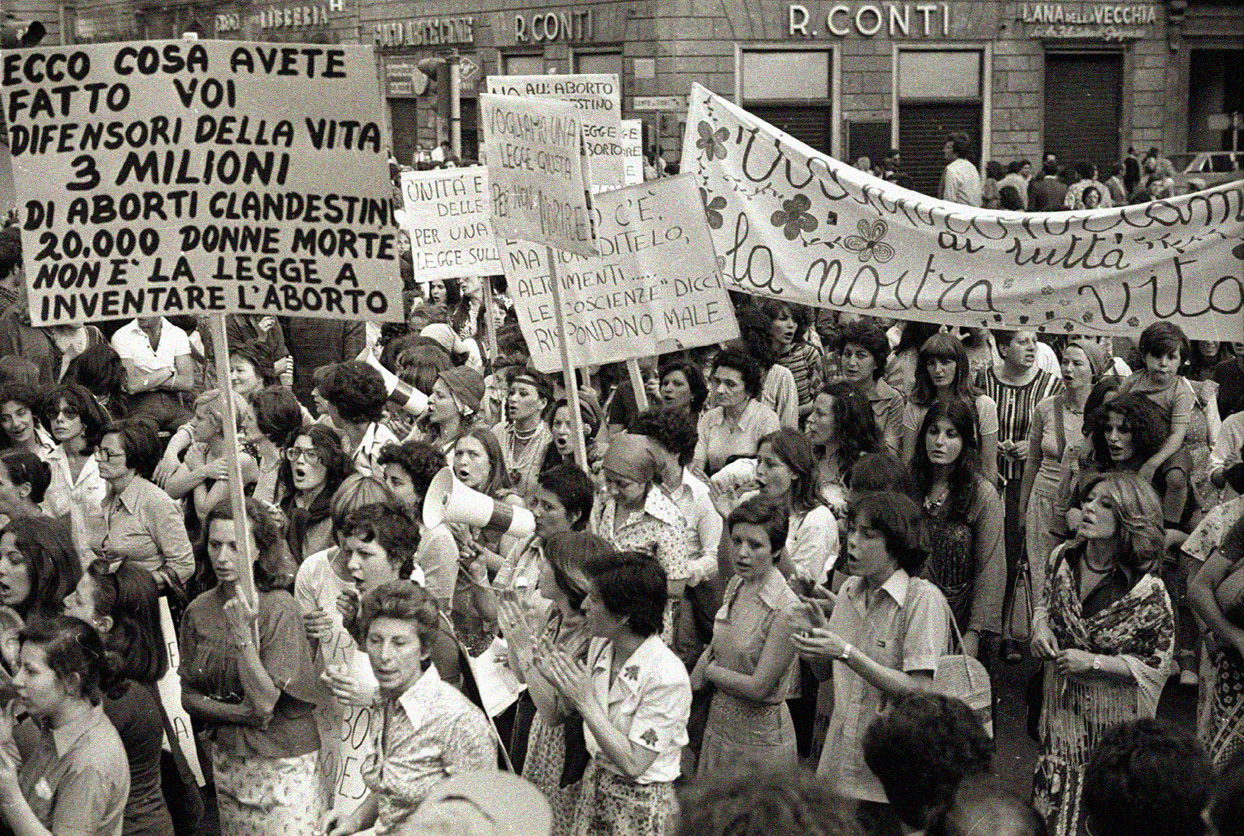
They knew of the affair on women’s blood
Before 1977.
They all aborted
In the most dangerous ways
In fear
Risking prison
Still bleeding
They paid as criminals.
For sadism, exploitation
Racism
It’s a child for the state
It’s abortion and a crime
When law 194 was confirmed
A male orgasm in a woman’s vagina
Could still impregnate her
In the very moment
In which she was taken away
From her sexual enjoyment.
Who owned the uterus then?
Who owns the uterus now?
Who owns the machine?
We share a new nervous system now
No historical sense grasps the present
While reproduction opens the uterus
To predecessors and rent
They are faced with guilt
Terrified by what sleeps in them
We face walls
When ‘true’ burial is given to the fetus as persona
Spread on top of women’s communities
The lost battle for housewife salary.
Does an immigrant woman take care of your child?
Does an immigrant woman take care of your parents?
Does an immigrant woman take care of your house?
Blind mirror, what is your colour?
No one of us wants to punish a partner
Or self-punish herself.
Abortion is not traumatic for the woman
But an inner aspiration in the collective sensorium.
No female initiation is connected to menses and childbirth.
Initiation means saying ‘no’ to the mother’s sacrifice.
Abortion is scientific evidence of an evolutionary peculiarity
Of the woman who opposes her existence to capitalism
And of the woman who embodies the refusal of it.
We were many writing that abortion was the real goal of pregnancy
But lots left for ‘authentic needs’.
Days dissipate in somnolence
Our folk age
Chronology (Emblem)
Sara Benaglia
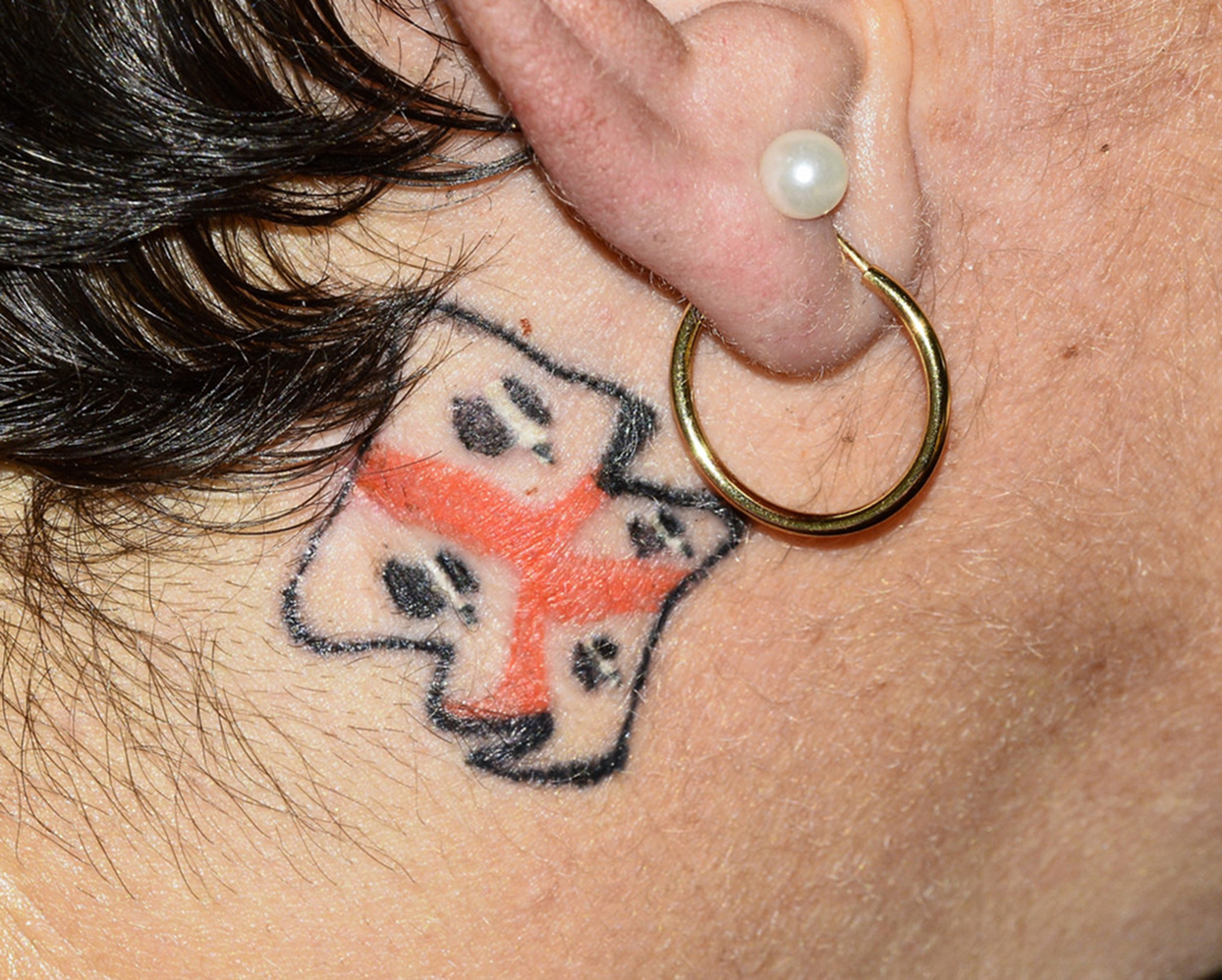
Verification mechanism: to allow for the belief that something is true.
Verification object: the flag of Sardinia.3
1096: Peter I of Aragon wins in Alcoraz. → The emblem of the Four Moors is created as the symbol of the crown of Aragon.4
1100: European heraldry is forged.5
1157: Barisone I de Sierra marries the Catalan Agalbursa di Cervera. → The emblem for the newly born Bas-Serra line is the eradicated tree paired with Catalan stripes.6
1164: Barisone I de Sierra, Giudice d’Arborea, is crowned King of Sardinia by Emperor Federico I Barbarossa. → His emblem is the Arborea (Arborea → Albero → Tree).7
1182: After the coronation, Barisone I is imprisoned for eight years. → The seal of judge Barisone I includes suns and moons, symbols of the Christian-Byzantine (or orthodox?) tradition.8
1281: King Pietro II il Grande (1276–1285). → The emblem of the Four Moors appears for the first time in Sardinia on a coin.9
1355: Mariano IV d’Arborea united all the Sardinians under the same flag. → His personal emblem unites the eradicated tree paired with the Catalan stripes.10
When did the blindfold fall over their eyes?
1492: The four Morons face left and wear crowns.
1590: The four Morons face left and wear bandanas.
1591: The four Morons face right and wear bandanas.
1621: The four Morons face left and wear bandanas.
1750: The four Morons face left and wear blindfolds.11
1831: The four Morons face left and wear bandanas.
1842: The four Morons face left and wear bandanas.
1902: The four Morons face left and wear blindfolds.12
1906: The four Morons face left and wear blindfolds.13
1918: The four Morons face left and wear blindfolds.14
2019: The four Morons face right and wear bandanas.
Collectivity
Werker Collective

The state of being of people who gather to form a whole, perhaps around something shared – a shared space, a shared resource, a shared task. While collectivity is inconceivable without a certain degree of sociability, and always implies ties and cohesion, it does not necessarily designate a homogenous unity (which is something that perhaps the word 'community' better denotes).
Communal Anger
Florian Göttke
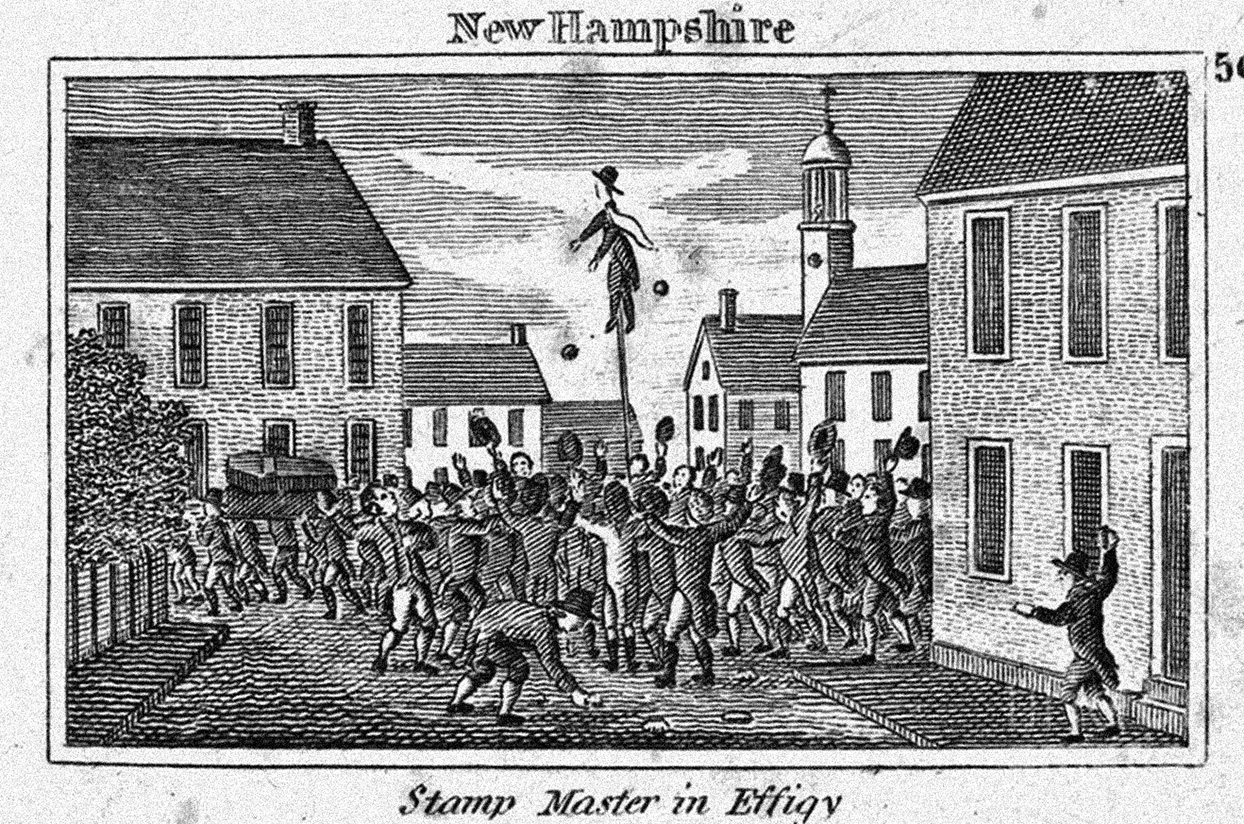
In 1765, a wave of popular protest swept through New England colonies against newly levied import taxes. ‘No Taxation Without Representation’ became the slogan that summed up the simmering anger. The protesters appropriated traditional effigy practices of popular justice – used to humiliate and ostracize people who transgressed community rules – and adapted them to their needs. Communal anger found its expression in performances of violent symbolic punishment. All over the colonies, effigies of the newly appointed tax collectors were paraded through town. They were pelted with rocks, beaten, hanged, mocked, ridiculed and finally set on fire to the delight of the rowdy crowds. It was the beginning of the American Revolution.
Communal Laughter
Florian Göttke
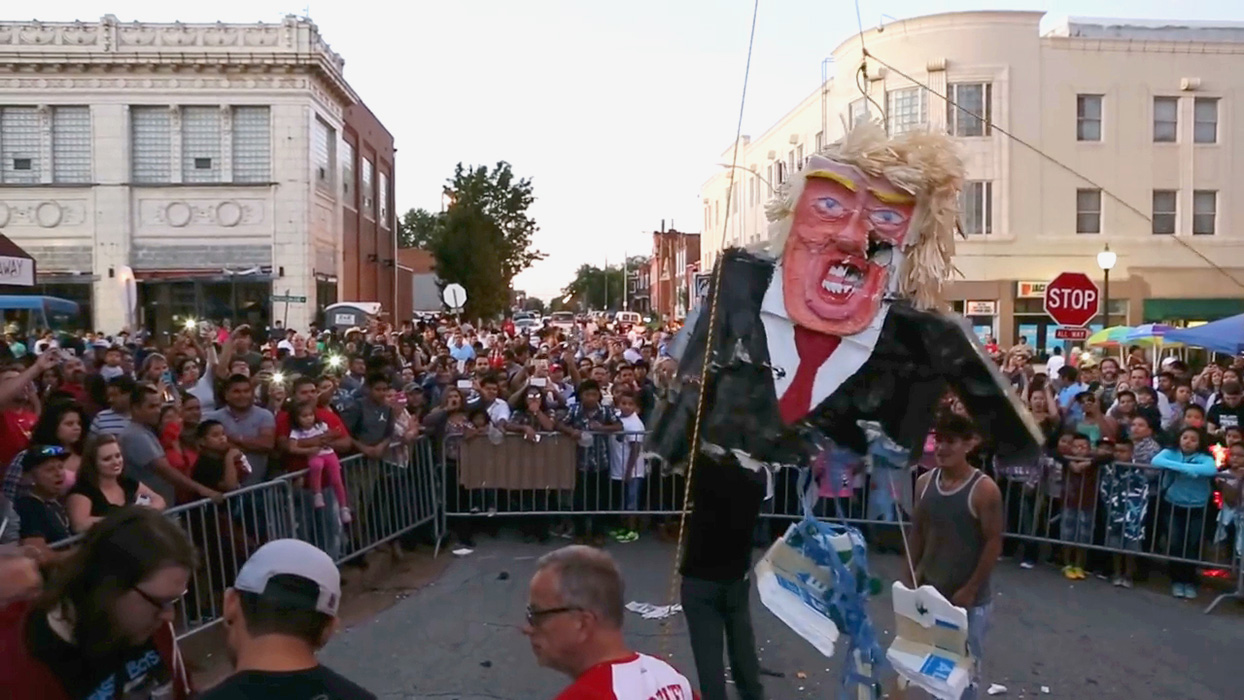
Effigies of Donald Trump began to appear just after he announced his candidacy in 2015 with derogatory remarks about Mexican immigrants. Trump effigies are often made in the form of piñatas and beaten to a pulp by protesters. Or they resemble traditional Mexican effigies of año viejo (the old year) on New Year’s Eve and Judas before Easter, burned to exorcise the adverse forces of the old year. The festive, carnivalesque communal rituals celebrate the cycle of life, where symbolic death becomes the prerequisite for rebirth and renewal.
The spirit of carnival still dominates the protests: Trump the monster, Trump the demon, Trump the baby, Trump the hate-spewing mouth, Trump the orange-skinned buffoon. Fear and communal anger about past and future injustices is mixed with irreverent communal laughter. In the performative presence of bodies laughing and acting together, acting bodily with and on other bodies, a new space of politics is created, constituted by inclusive alliances and a claim of equality. These performances mount inclusive communal laughter as a weapon against the stultifying forces of white supremacy and the politics of exclusion that are so characteristic of Trump’s administration.
Cosmethics
Werker Collective
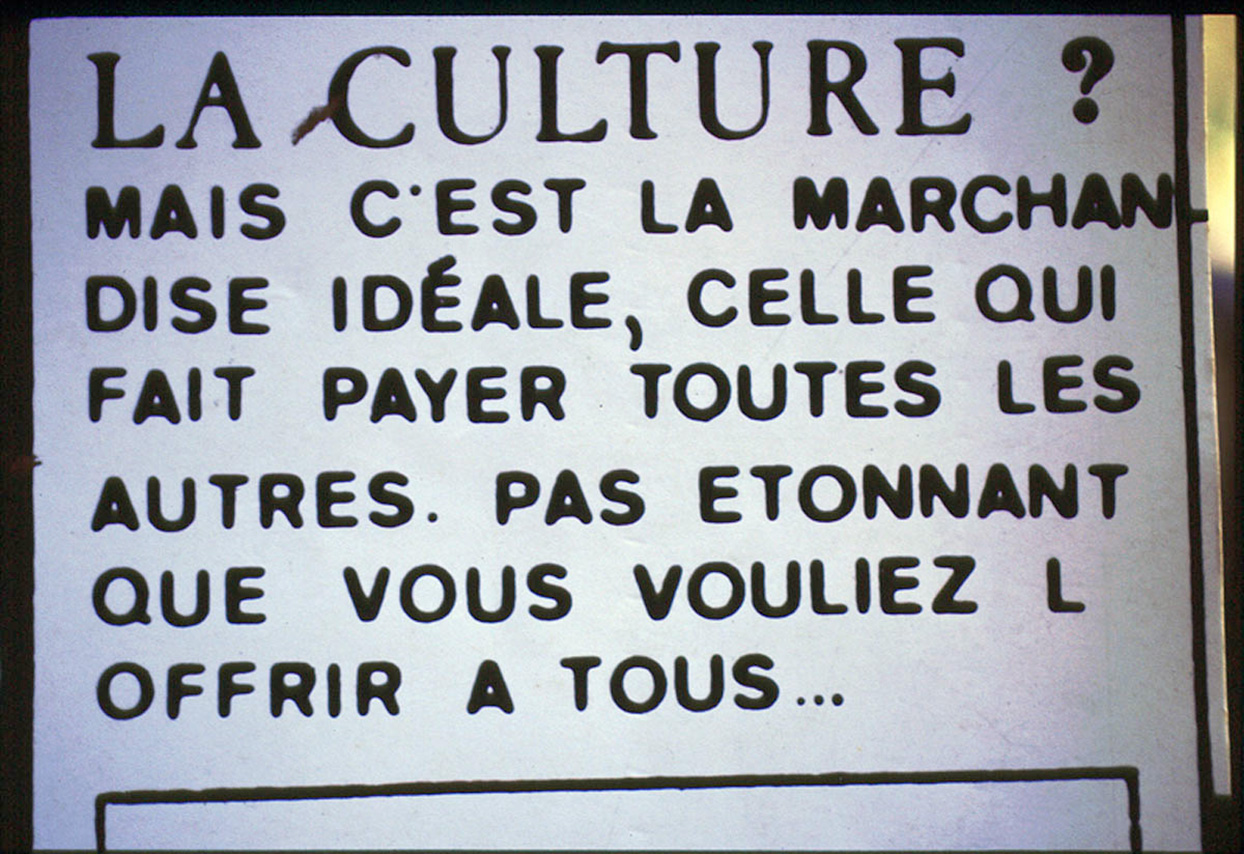
‘Cosmetics’ often has a pejorative ring to it: the merely superficial, keeping up appearances, the gloss or patina that covers up underlying, structural problems. False appearance, with or without deceptive intent. This goes back to the Socratic dialogue Gorgias, recorded by Plato, in which Socrates rejects rhetorics as cosmetics, which is to say, as mere flattery, as surface adornment, condescendingly comparing it to a baker trying to make his bread look more palatable. (The elitism of thinkers dealing with abstract and supposedly higher truths vis-à-vis workers and craftspeople, who deal with the material world, is already well in place here.) But what would it mean to think of cosm-ethics – an ethics based on the creation of beauty and order in our physical surroundings, comparable to the beauty of the cosmic system? What would such a cosmethics imply for how we live, how we relate to those in our proximity, how we see the world…?
Cruising
Flavia Palladino
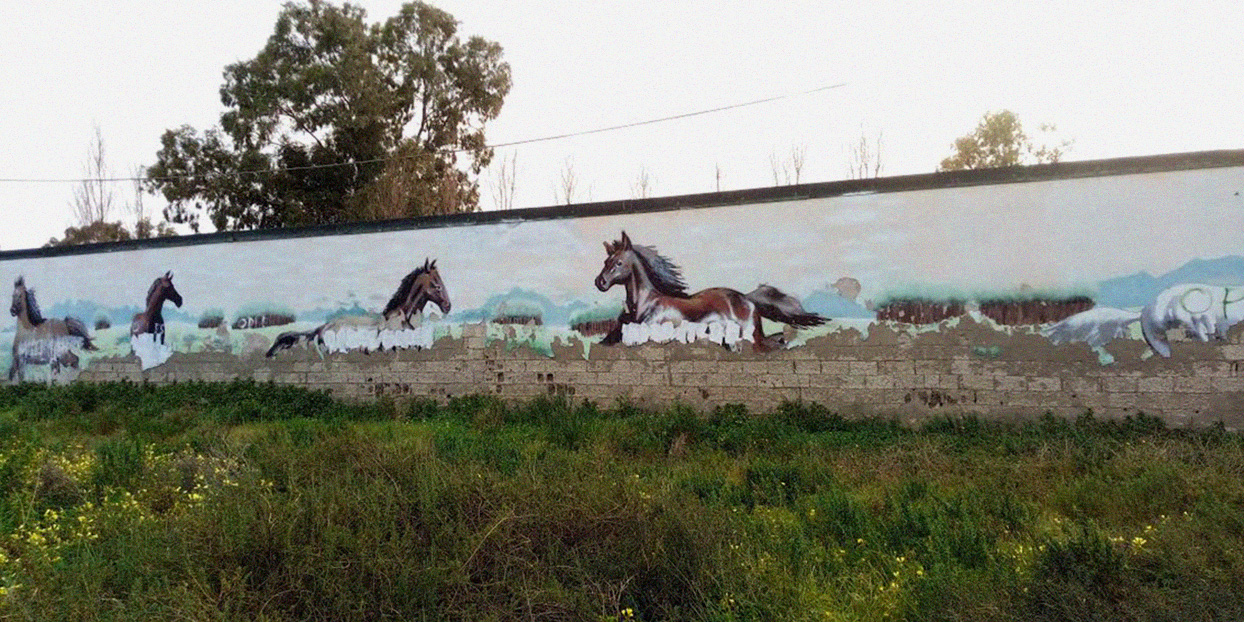
In the following lines we begin to glimpse:
a horizon
chapter on futurity
autobiographical fictions
the abolishment of institutional religion
the abolition of capital punishment
sexually oriented performances
Passages of a book.15
Failure
Saskia Burggraaf
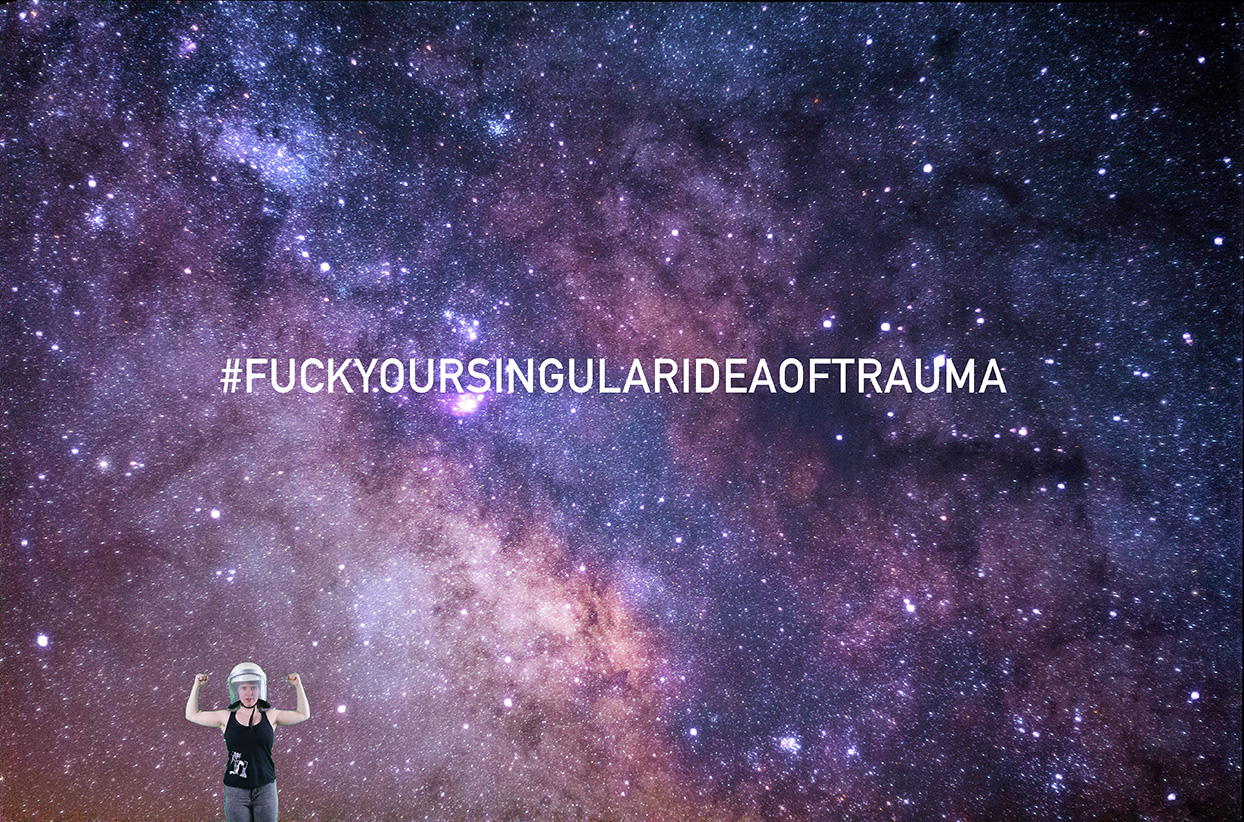
A hurt body is connected to a non-linear idea on time; we see a DNA string shaped by trauma, attaching many storylines to it, in a different order from expected. From the amygdala growing to a fight, flight or freeze response – a dissociation, an elsewhere as necessity. We can see this as an improvised state of being as survival. A being floating upon excluding aspects of participation or the concept ‘in need of a cure’. A need based on capitalist values that follow timelines of so-called progression.
Queer consists of nothing and everything more than temporalities, which sometimes keeps disability and the ‘already shattered’ as sidenotes. Sometimes, future children are already here.
Trauma time repeats the same shit while being in the present, through the senses: auditory, visual or tactile.16 Capitalistic structures aim towards a heteronormative linear idea of these experiences, while the body is still elsewhere via the residue of rape. The act of filling in a police report with a storyline from A to B, in order for it to be true, is a violent act in itself. It fails because it needs to.17
Seeing potential futures within this re-experience of a terrorized past, instead of repetition of the same shit. We find this body within the walls of confusion and illusion of the occupied space, as those bodies seek alternative shelter. We need to reflect on borderlands as home, as a choice, as a necessity, since we are not able to be ethically present; wanting to let the mind of a child wander as it walks down a path of its own goals, dwelling, leading it away from one laid by governmental law as hopeful. One shattered and travelling mind informs another. Re-experiencing the past while seeing the future, there is another one already here. But we are not there yet.
Fragility
Dorothy Hunter
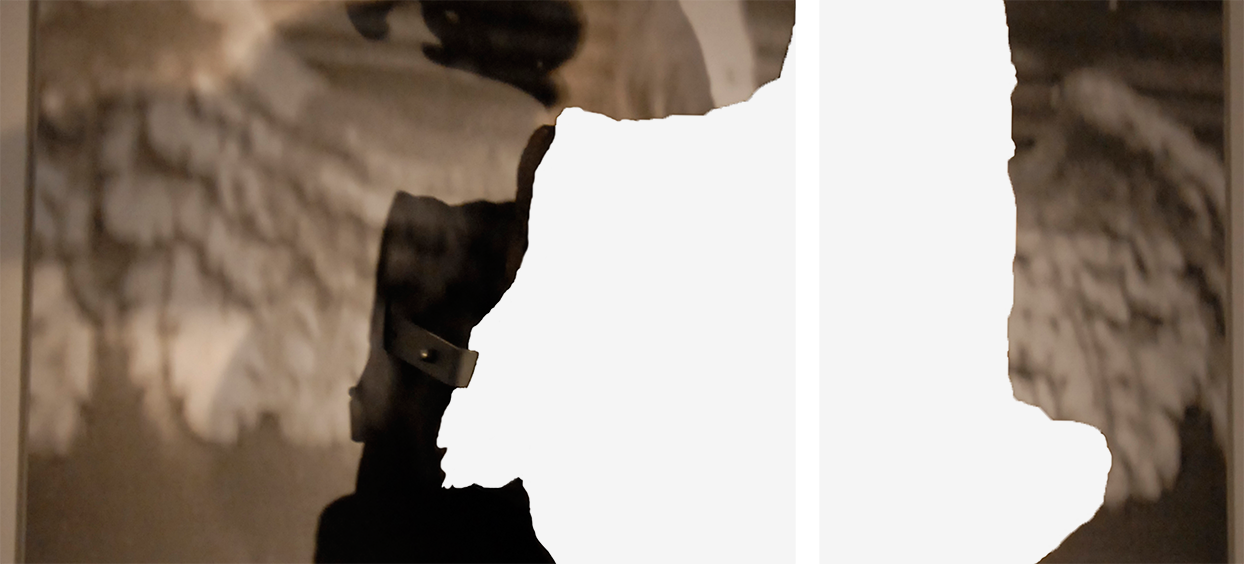
You could let yourself fragment and put it all together again and hope it’s better than before. You could observe a rising whisker through the shoulder blades, and stay still so your guts won’t fall out. You could let the flatline be a foundation, a force that pushes upwards through your body, a counter-gravity. Let me see you like this, particulate packing into you, working fractures. Your medium might change; you could be more cohesive this way. You could be this persistent half-corpse, use your own fallen guts – they seep through the edges – to build something you’re actually inside.
Gesture
Werker Collective
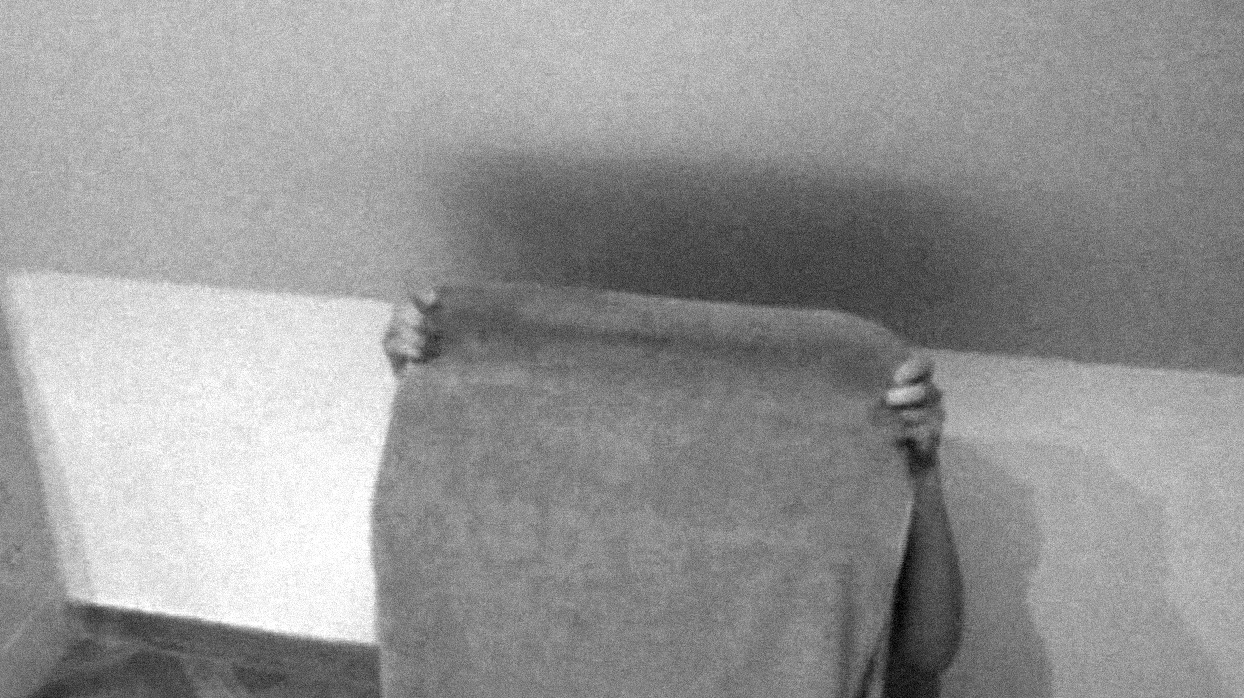
Whether in art, politics or work, what we tend to call gesture is usually suspended somewhere between the sphere of mere functionality and that of mere aestheticism. this is the case in examples as divergent as the rhetorical gesture, the gesture of applying a paintbrush ‘just so’ or the gesture of setting up a table more nicely than you strictly speaking should have to. According to philosopher Giorgio Agamben, gesture ‘breaks with the false alternative between ends and means that paralyzes morality and presents instead means that, as such, evade the orbit of mediality without becoming, for this reason, ends’. And one page later: ‘the gesture is the exhibition of a mediality: it is the process of making a means visible as such’. For him, walking is not purely a means for getting from A to B, just like dancing is not some purely artistic and thus supposedly more noble activity. Thinking about our ordinary gestures, then, however routine or banal, allows us to make the everyday more like art and art more like the everyday, ultimately making the distinction obsolete.
Minor / Threshold
Dorothy Hunter
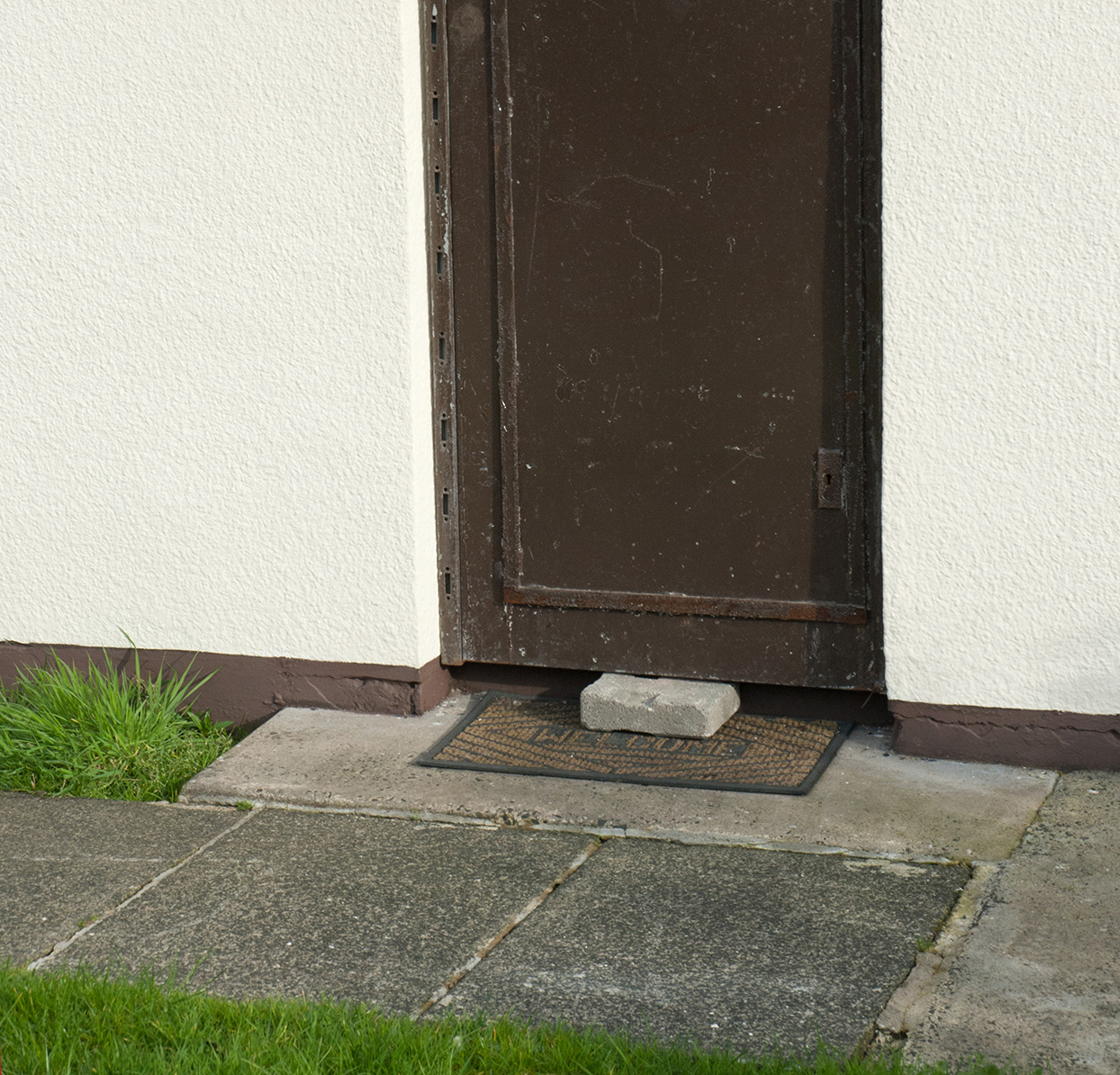
There is a violent longing to escape our political being. To solely be might look like:
- subsumption by the environment
- the epicentre of the default
- an ontological hermetic seal
but to resist a life that is channelled into an action against, to resist being something formed in contradistinction, fades away the edges through erosion to a grain: this is not absorption. The collective still presses the negative space; it is haptic to its majority and its matrix of othering. Perhaps you are not even a part of the amorphous mass of other in this collective consciousness: definable solely in the passage through. A constellated history across definitions can fold to your present. The apolitical being is not the choice but the lens that flattens spectrums.
Mixing Notes
Flavia Palladino
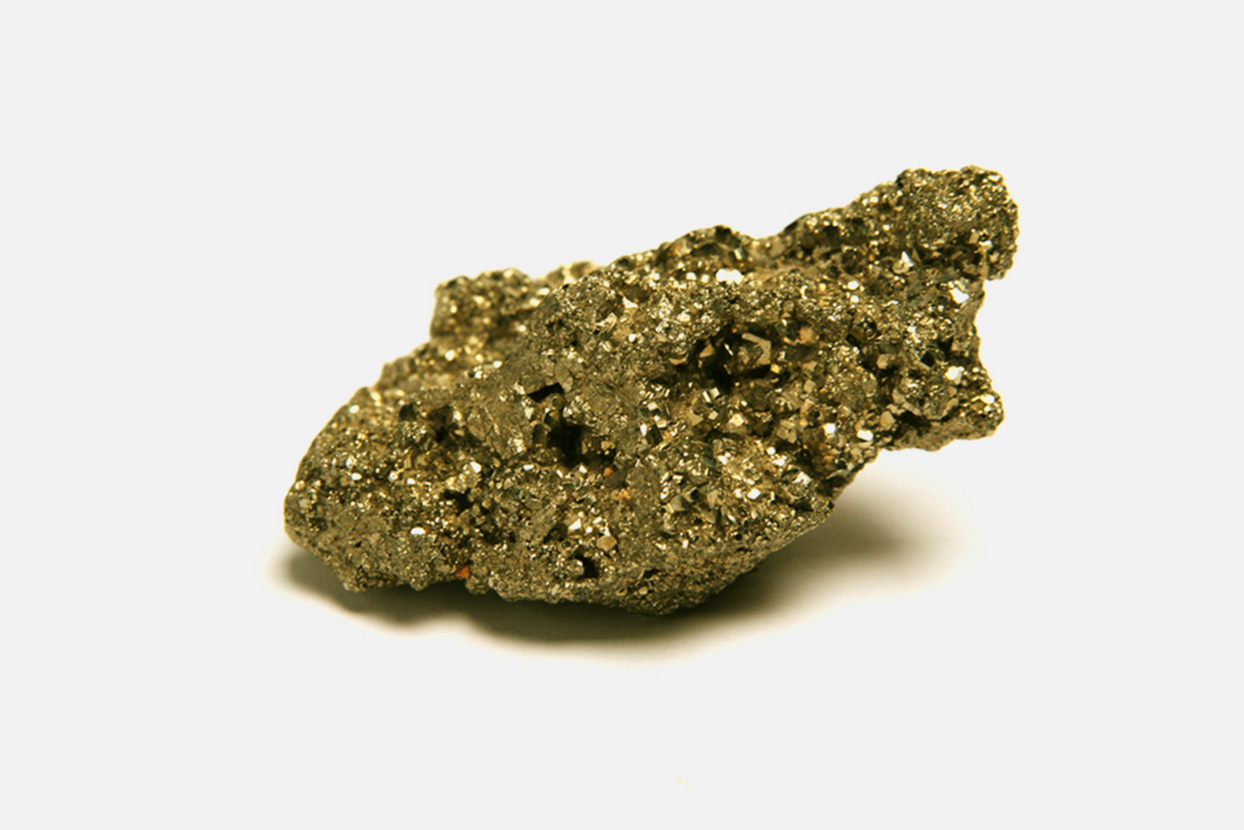
‘It was the others, they wanted misfits;
they wanted you to embody within yourself
their ambivalence.’
A young gay British-Pakistani boy
and his need to challenge the canonical narratives
Of Western Man:
The failure of connection with others is a failure to understand
What it is to be alive.
[Racism is a kind of snobbery, a desire to see oneself as superior culturally or economically, and a desire to actively experience and enjoy that superiority by hostility or violence.]
No way back
Dorothy Hunter

No-way-back as an anchor, a springboard, a downward incline and calluses that run over time. A distinct lack of disposability when the water stains dry and felt together the fibres.
Playfulness
Werker Collective
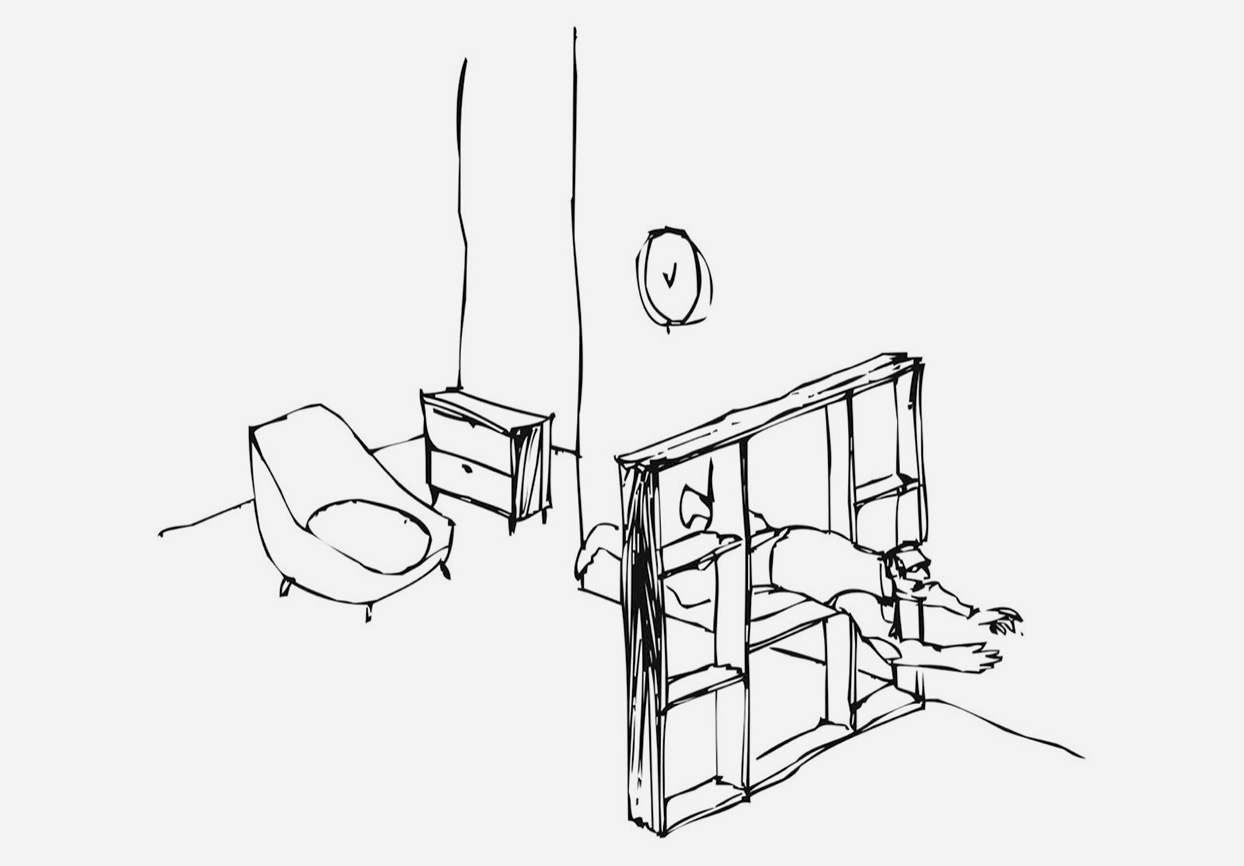
Name: Christian / Age: 29 / Profession: artist / Location: London / Weekday: Monday / Reference: Camp home — domestic exercise and rehearsalAll work and no play. it is extremely common for us to juxtapose work and play, to consider them diametrically opposed. For certain mid-twentieth century avant-garde movements, including Situationism, for instance, work was nothing less than a crime against humanity, and play the means to overcome the tyranny of work. This opposition between work and play did not emerge without good reason: not only is work usually characterized by the way it is structured and institutionalized (as in formal employment), as well as by its remuneration (though many counter-examples exist here, including domestic work, of course), what also sets it apart is that it is determined by functionality. Work is a means to an end – productivity – whereas play is its own purpose, if it has to have one at all. These two distinct areas become more blurred with the gamification of the economy and with corporations, which shall not be named, encouraging employees to play ping-pong with each other. Still, for most of us, in times of the increasing functionalization of everything, with an ever rising stress on (and because of) demands for productivity, the liberating potential of play as indeterminate activity, the potential of play as resistance, is very real.
(Queer) Vandalism
Jorinde Seijdel
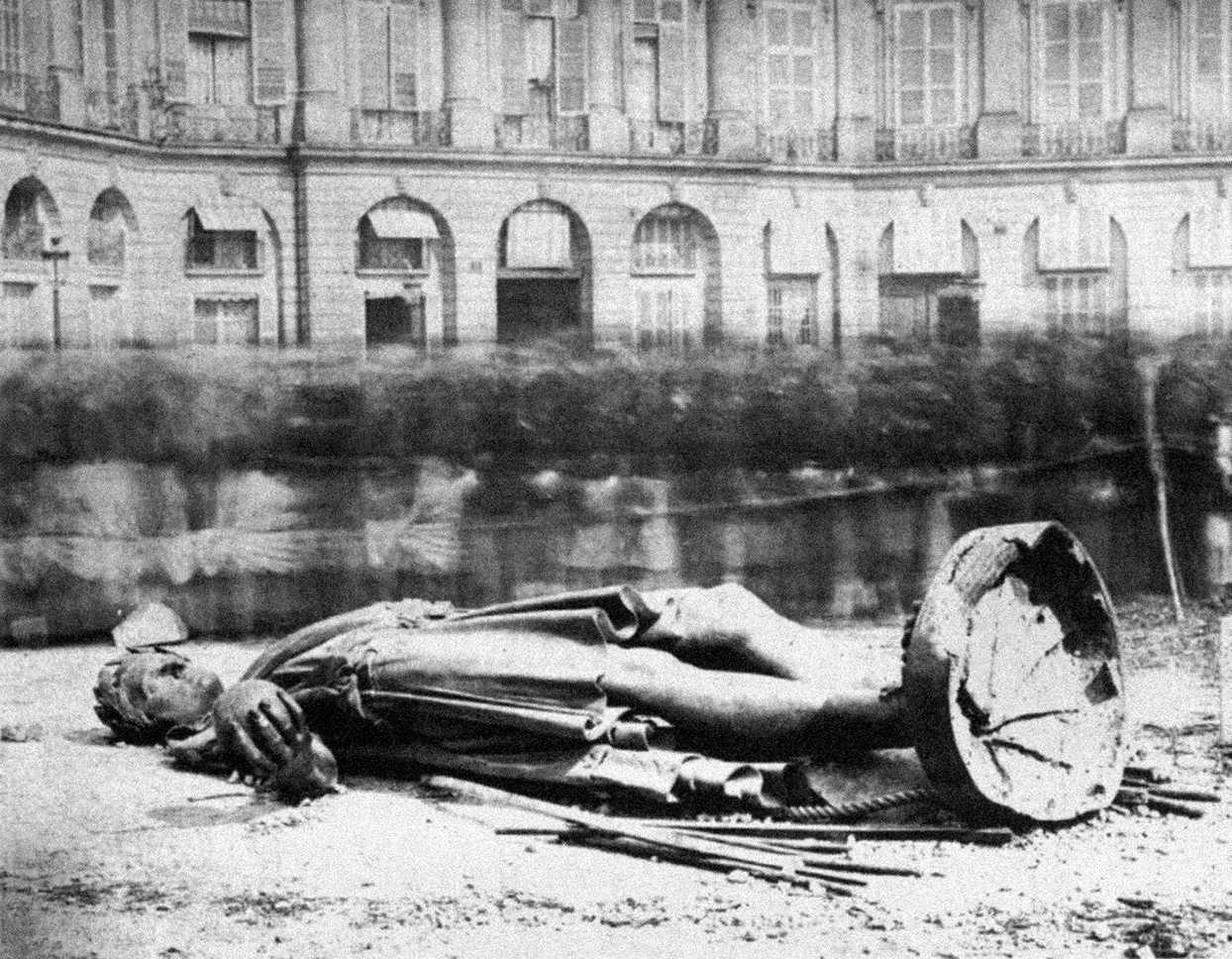
Defacing, throwing, cutting, hitting, pushing, kicking, scratching… Vandalism is about willfully and illegally destroying, dismantling and demolishing things, structures. But what is damaged is also something. Something new has been made, for worse or for better. Something has been edited, rewritten, repainted, reformed, revised, retold… Vandalism is both destructive and creative. It costs.18
Sara Ahmed connects vandalism to questioning dominant modes of power. She writes about ‘queer use’ and ‘queer vandalism’: 'To queer use is to linger on the material qualities of that which you are supposed to pass over; it is to recover a potential from materials that have been left behind, all the things you can do with paper if you refuse the instructions. That recovery can be dangerous. The creativity of queer use becomes an act of destruction, whether intended or not; not digesting something, spitting it out; putting it about. Queer use in other words can be understood as vandalism: the willful destruction of what is venerable and beautiful.'19 Ahmed says that to transform a system, we have to stop the system from working. When you stop the machine from working, you damage the machine. You might need to be a vandal. We should be willing to be vandals.
Re-arrangement
Flavia Palladino

Traveller’s cheques & private fears
It’s a bargain I refuse.
(there’s nothing new in this formulation)
From the streets of Stockholm to the churches of Rio
and the sidewalks of Harlem
I lost my conscience a long time ago.
Resonance
Saskia Burggraaf
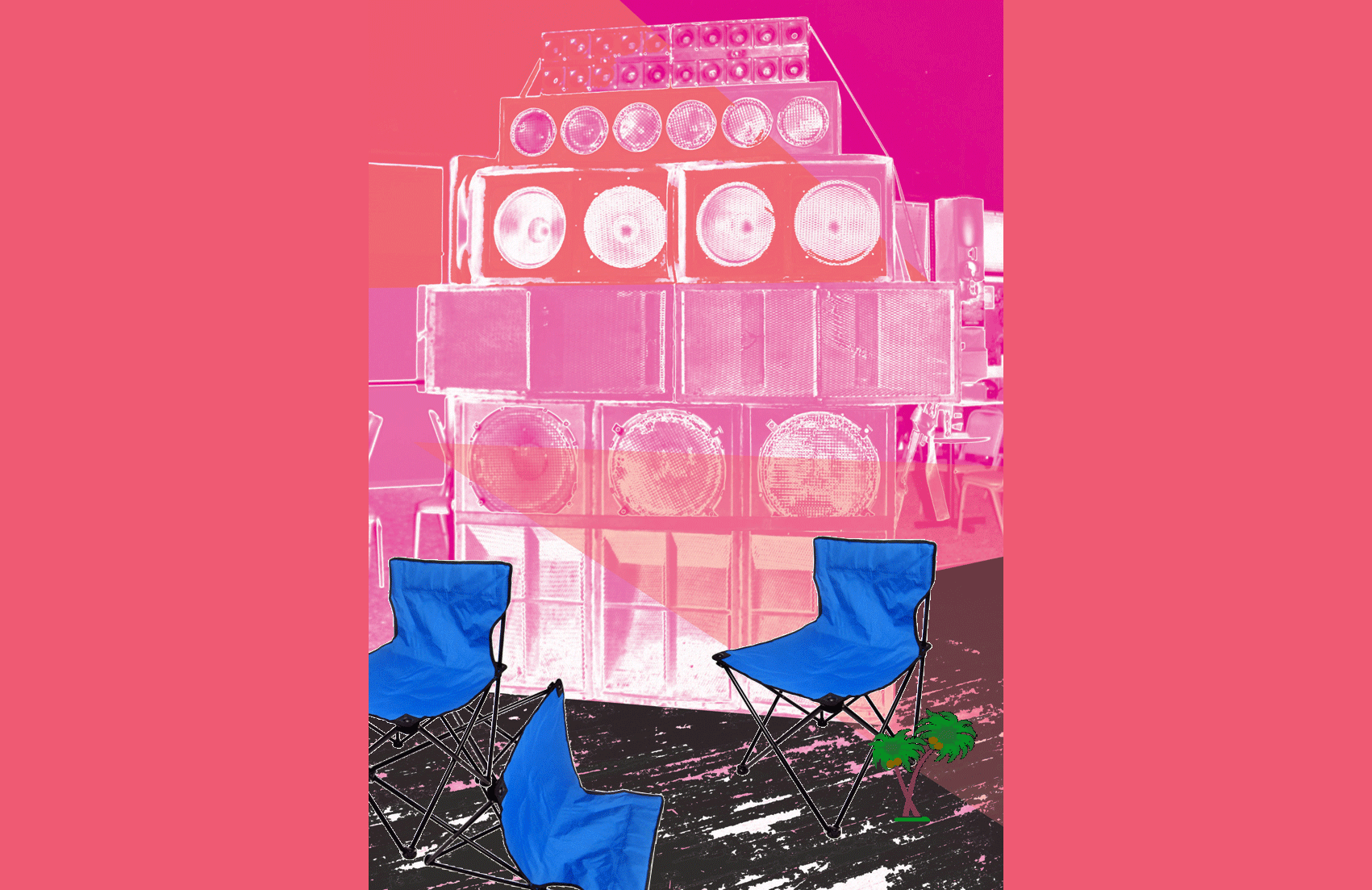
Squats adorned with stacks of squares: piles of speakers, a sound system of tremendous power is still embedded in a colonial past. Rare is the recognition of copyright; a residue of unclear integrated power structures. Styles enacted in alternative occupied spaces. Still, sound as resistance, a physical encounter with cultural production made by people all over the world. Muscles relax, organs shake with resonance, taking over the body and the crowd.20
Globalization and slavery put sound systems all over the world. Resonating the beat of the hurt. Let the alternative occupied space not reverberate and reiterate oppression, but instead claim the idea of (alternative) occupation (the squat) and fight for a reactive counterculture without patriarchy.*
A loud bass is playing. A woman is pushing the buttons. Men stare astonished; unknowingly clinging to the masculinity dripping from the vibrations. Dripping away to reveal something else. Sampling to mix, improvise to reorganize.21
The bass resonates different storylines, a counterweight to the oppressive, capitalist ideal of consumer pleasure. Pause, don't repeat. Blasting through the body, the bass passing through bodies, as if echoing, ‘we are leaving towards the wild space, the borderlands; come with us’.
How to reveal and reclaim the queerness to the sound system, to reorganize the alternative occupied space and release it from the (in)visible power plays of toxic, heteronormative masculinity in the gridlock of the capitalist, colonized occupation?22
Bodies with eyes that are closed. The bass was invited in even when perceived masculine. The borderland has to reinvent itself over and over using the arts of queer failure as an advantage, because there was no other way to position itself.
There is a clear but thin line between the will to do 'good' and being otherwise.23 A dancefloor has the potential to shake things up, a disorderly rearranging of power structures in dissonance. The queerness of bass has been denied by the colonizer through heteronormative oppression and smothered under toxic masculinity. Reading it as violence24 and power.25 Reclaim it, let it drip away; bass is queer.
Scratch
Jorinde Seijdel

Doing or making something from 'scratch' means to begin from the beginning, to set out on some action or process without any prior preparation, knowledge or advantage. Wandering refugees in creaky boats, who are stranded in improvised camps or in an illegal life, then find themselves in constant scratch situations. Here scratch is indeed the absence of any supportive or fixed structure. Does being in this condition imply a start from the beginning, or is it rather being scratched out? From something (a life, a body, a history) nothing is being made… Scratch can perhaps be interpreted differently. It is also an old (sporting) term for a line scratched on the ground that acts as a boundary line or starting point. So scratching in this sense is a performative and bodily gesture that marks and draws lines, potential flight lines into the something / nothing of improvised spaces...
Stealing
Flavia Palladino
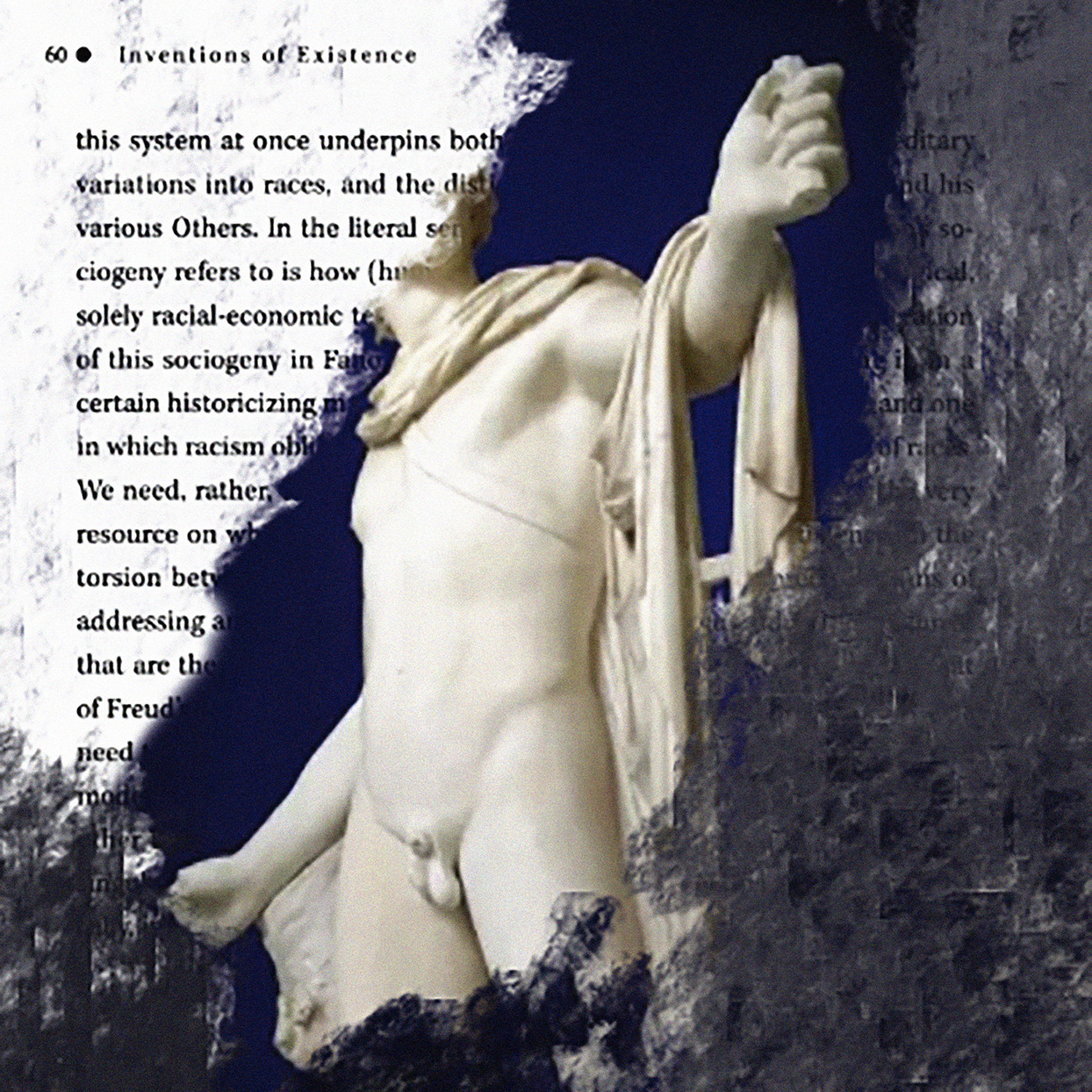
Somehow hidden or disguised by illusions
We see nothing but the effects of domination
Trends of retribution
Social and political constrains
Promise of new institutions
(I am sincere as I know how to be)
To rethink the relation between symptom and culture
What needs to be freed or, more importantly, of what might constitute
the clues or cruxes of such liberation.
Temporal
Saskia Burggraaf

People placing a table, a chair26 and a bed within it to create housing in the right way. Even if a beer crate creates temporal peace.27 A feeling of home, a feeling of a palmtree.
It's okay to be. They said in there, while resting their legs upon the beer crate table. While the he still disrupted the she simultaneously in every conversation. The confusion was to find neglect of care in the alternate heterotopia28 that copied so many things, also the violence descended from patriarchy.29 That isn't good enough, feet stepping back and forth, rocking bodies in the shit of repetition, hidden in the crowd.
‘Structural patriarchal violence has many faces and comes along sometimes more subtle, sometimes more massive in various manners and shapes.’30
Occupation has its own risk / responsibility. To find the point of realisation where the shattering began, to be allies, taking the dive. Hurt bodies at different moments and other timelines. The shattered body informing the other comes close to the idea of an alternative ally. But we are not there yet.31 The bed was making a whistling sound, already saying ‘it will not last long’.
Thieves
Flavia Palladino

I caught fireflies
cupping them in my hands
giving them to you
‘Did you kiss her yet?’
my face close to your face
and I kissed you again
pressing close.
Translation
Wilf Speller
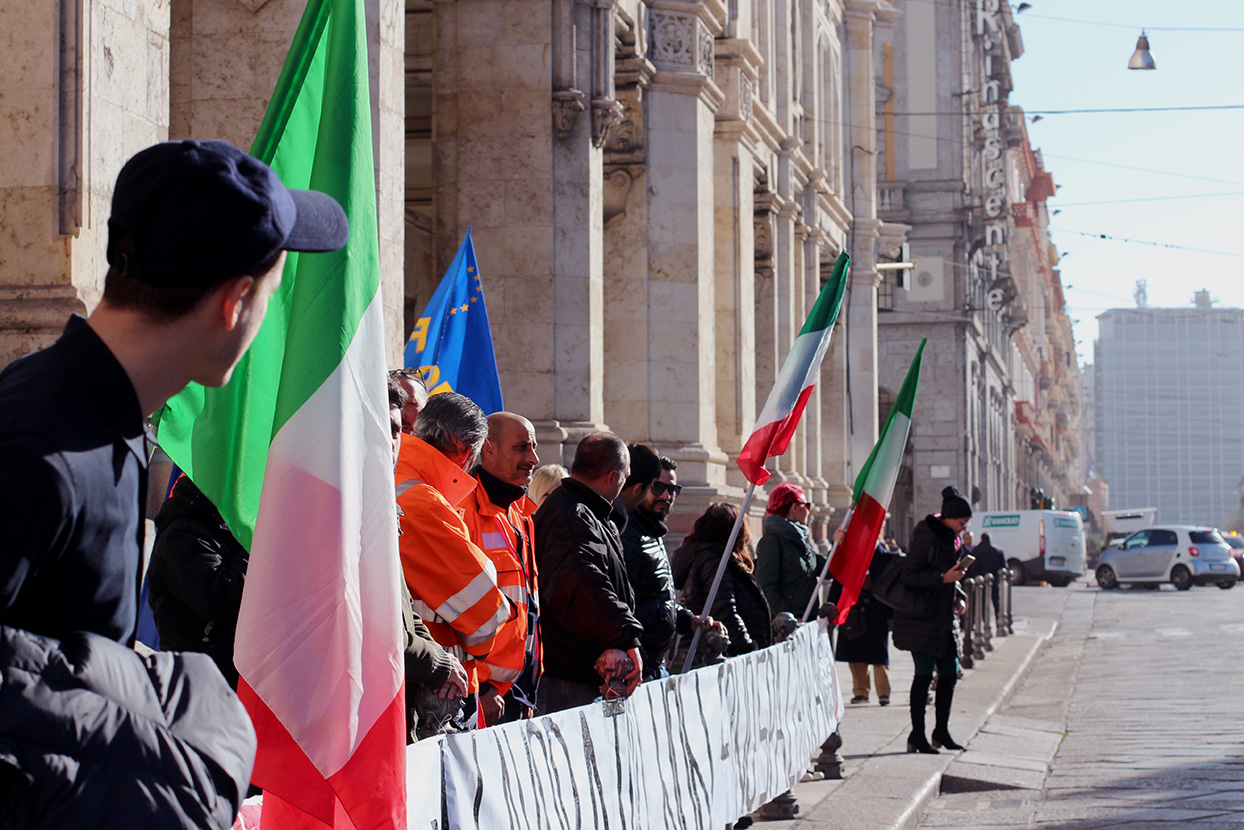
turning the corner
we are amongst the protest
that occupies this stretch of the promenade
too close to read the signs
we read from the inside
out
S. translates
what she can
we linger in solidarity
workers united in precarity
crossing the road
we look back
from a distance
and see the turtle of CasaPound
three men hold aloft poles with what appears to be red flags tightly wrapped around their ends
they unfurl
red
white
green
Vocal Fry
Nine Postma
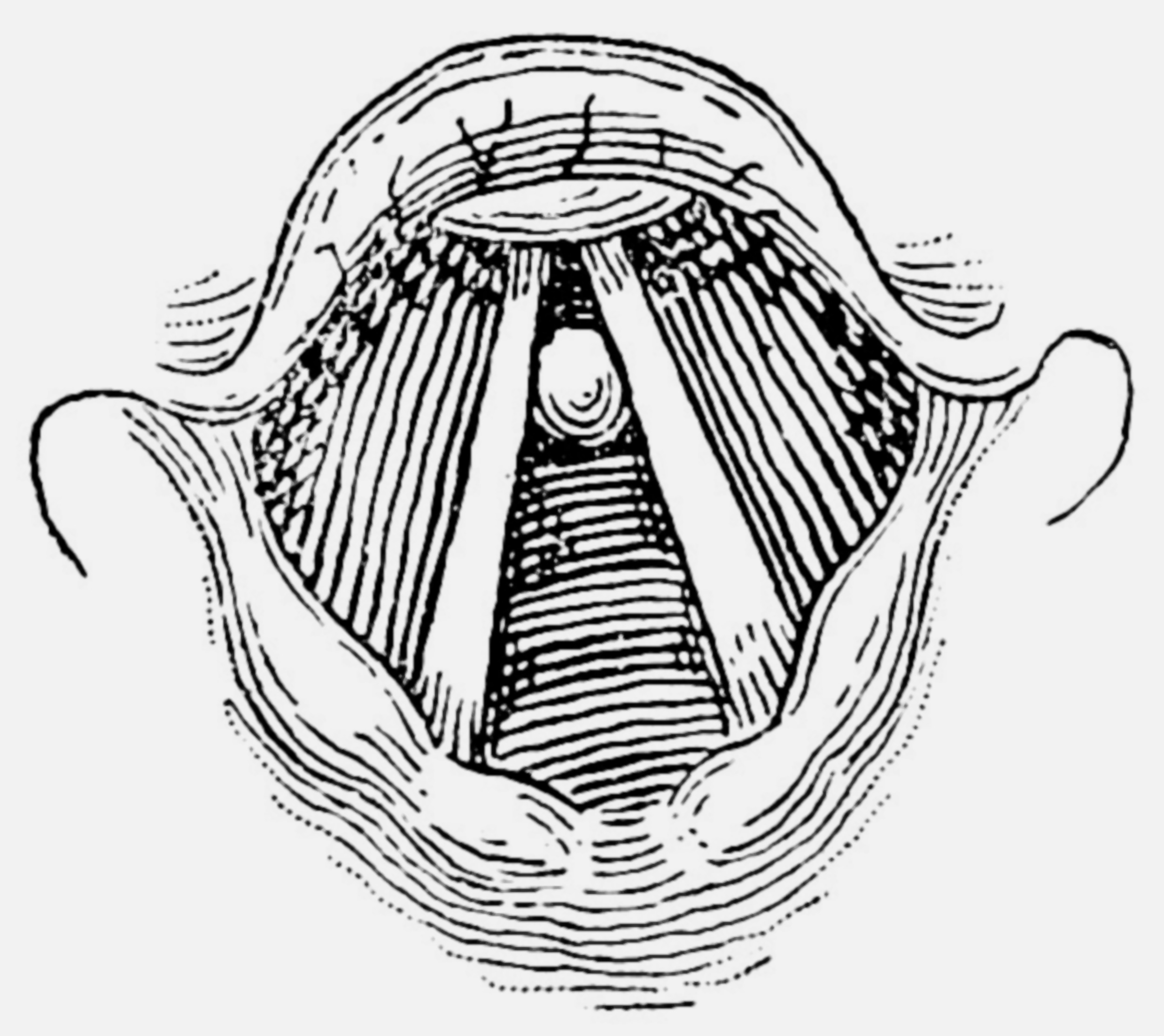
Ingredients Vocal Fry Recipe:
Your voice
Supportive energy
Future goals
Take your voice and speak as you are used to speaking, a little bit upbeat and energized. Talk about your goals in life and recently bought accessories that will guide you towards mentioned goals. This will warm up your vocal cords and get you in the right mood. Do this exercise for about one hour. After this, you are well warmed up for making a delicious vocal fry.
In the next step, you want to try to relax your vocal cords, while you keep talking. It may help to lower your voice slightly, or to slow down your talking pace. Let some extra air flow through those vocal cords of yours. Also, try to add some other topics, like news items, politics or books you have read. Pay attention, since the perfect vocal fry is not easy to achieve. Repeat these exercises on a daily basis.
Now you are ready to practice outside! Find some other people to hang out with. While in conversation with them, try to insert your vocal fry exercise routine. It may seem a bit scary at first, but you will notice that others will follow your vocal behaviour.
You are now able to serve your surroundings that perfect vocal fry!32
Wild Space
Saskia Burggraaf

When we squatted the space,
the walls and within, we knew it
the space
of wilderness
she is not only ours.
We have to take care of it as failure was a part of it.
To let it resonate.
Resonate33
At the same time we needed to apply certain elementary rules, because chaos in itself is not anarchism. Anarchism itself is not for everybody’s body, yet, which creates chaos instead of a wild space.
A home never at peace to create common ground. Shattered minds within it to claim the trouble. Whereas the semi-private, semi-public gave many opportunities, we felt the responsibility of not being tired stinging in our backs.
Living with the temporary and all that what comes with it, while living with the knowledge you’d l(o)ose. Knowing she would loose first, to keep going as a motivation became the withdrawal as resistance.34 We held the doors widely open to every alternative aspect in the world, the mind blowing and the shit of repetition, potentially creating a multiverse as research, as a future hope of wildness, instead of a child (considering the exclusion of some of the present).35 We tried to open and close the space of these borderlands with potential of smashing thresholds as an experiment. We did it, the not knowing. I felt scared; occupation can be a copy of the past with hidden patriarchal structures, instead of a chance to share the space within the rewriting time.4 It does come with responsibility. Occupation is not the same as giving space.36
Breaking
and entering
through
the threshold
scared to find another one while passing through.37
As the law describes itself,38 it doesn't include the disorderly as equal and with that the vital kinship needed to survive was created as a responsive force; we broke the doors, again and again.
And again39
and again.40
Choosing who to close it for. Hurt bodies as the apparatus of our strategies.*** Governmental law never thought of the mind as shattered and of non-linear in time, which thickened our scarred skin and tricked creators of the law into looking the wrong way, not knowing what failure has to offer.41
Wit(h)nessing
Nine Postma
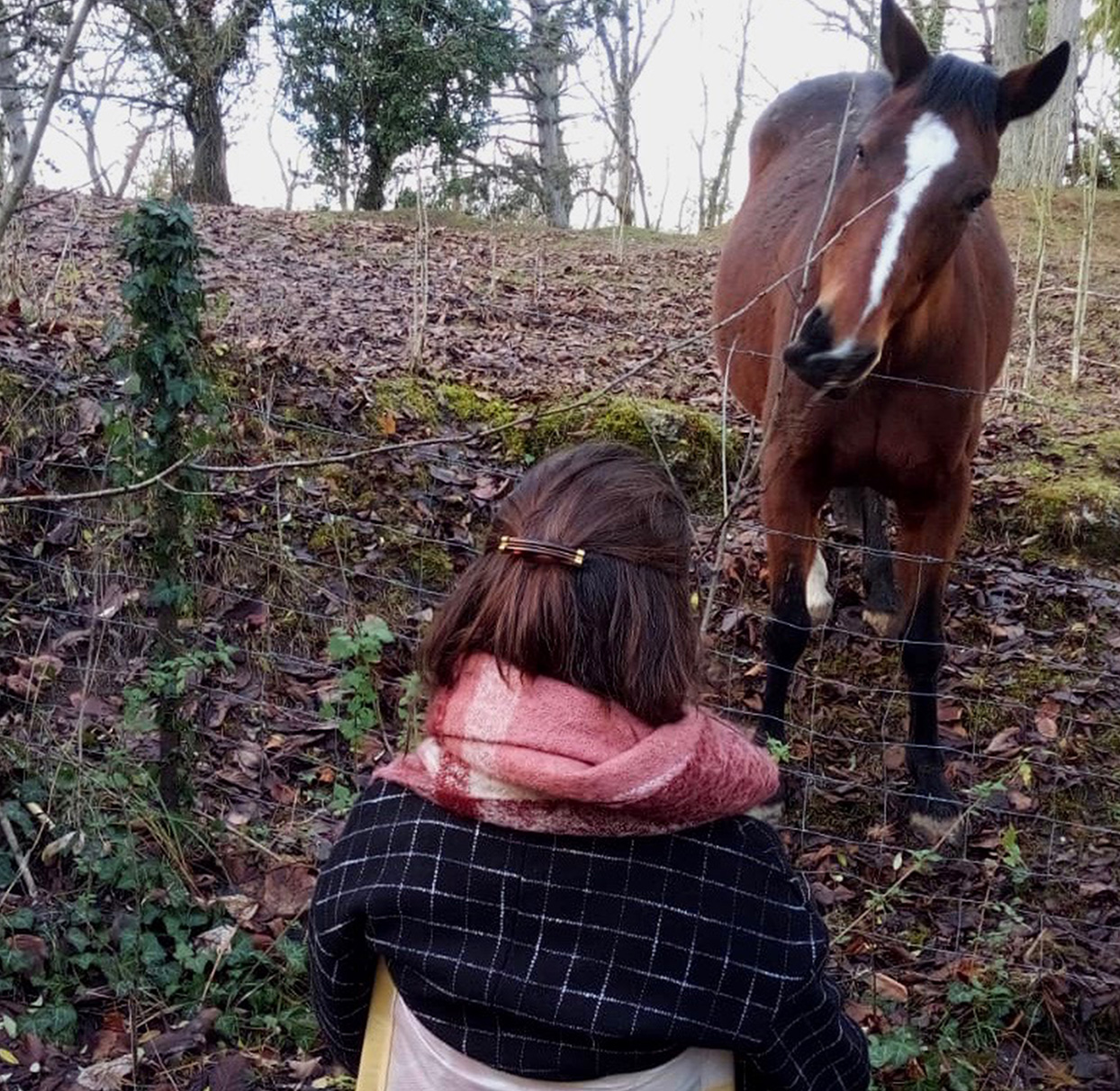
What phrase should I use so you understand what I mean? I am only asking for a friend. I am only asking because I want to know.
Are you hearing these things I am saying to you?
That’s okay.
Am just expressing thoughts that came in and are passing through as we speak, perfectly natural, nothing to worry about.
Not sure if it is working though. Do you find it satisfactory?
No inside joke is funny from the outside. What about jokes as a form of improvisation?
Hah! Is the effect. Affect. Bodily reaction combined with strong emotion. Shoulders moving in a vertical manner, facial expressions going crazy like you never see on the photo of your drivers’ license. Don’t smile. Sit up straight. Say thank you and please. Okay. Am drifting off.
(…) Last week the following was stated by reliable source in the supermarket (vegetable aisle): Mind my words, in twenty years, we are all going to be slaves!
The man on the horse approaches. Smiling teeth, probably white, though not close enough to see whether they are stained by mornings of Italian coffee and evenings of French wine. Purple jacket. He loves the audience. More smiles and then he stops the horse. The horse stops. The man sitting on its back made it stop walking. Right hand carrying a whip, he decides to show a trick. Make the horse show a trick. As he softly taps the horse’s leg, he says: Bèbè, say ‘hello’. The horse lifts its leg. Hello. We applaud and say thank you.
Wit(h)nessing
Dorothy Hunter
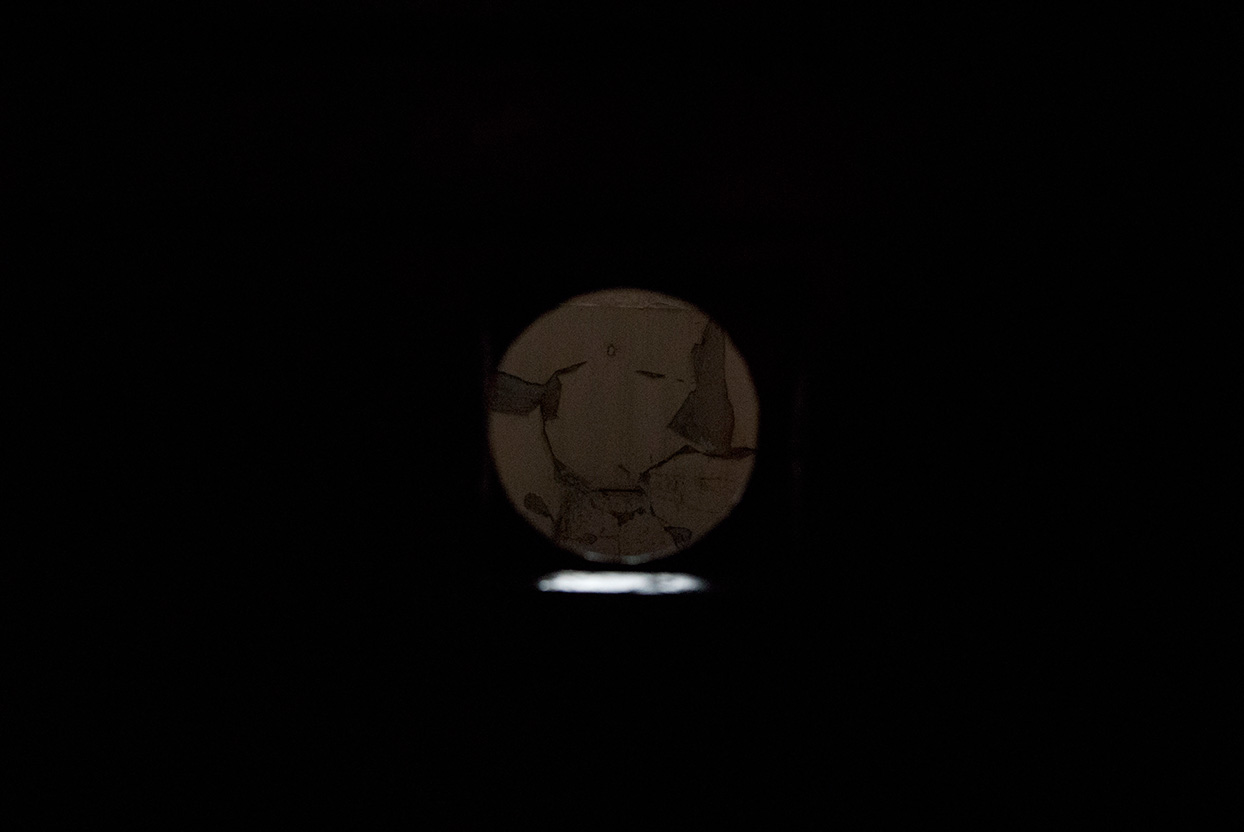
I am journeying through from a point to a next being with nothing else.
It and I are enveloped in our twin proximities, multiplying laterally with the other bodies beating. I am a part of the problem, I am part of the solution, but at the moment I am just potential, data, reacting, pricked. I could choose to submerge and could choose to be an outlier, were I an insider out rather than outsider in.
With whom do I witness?
My parentheses might be the centrepiece of an outward ripple. I can be connected from an ostensibly safe distance, disrupted from the everyday; norms might be gradually changed, environments no longer physical but emotional, eventualized, established to be disrupted in the next grip. My freedom-from is at expense of another, and I cannot walk away from this, or that. I lack the smell and depth of sound, colours flatten and are bordered by those that were designed to re-route my pathways and instead lead me to this. It is how I exist and others cease. My territory expands; theirs decreases to a point.
1. Nina Simone, ‘Strange Fruit’, 1965, www.youtube.com.
2. Kanye West, ‘Blood on the Leaves’, 2013, www.youtube.com.
3. See gabob.altervista.org.
4. See upload.wikimedia.org.
5. See www.editionsdanielderveaux.fr.
6. See www.google.com.
7. See www.google.com.
8. See horoene.files.wordpress.com.
9. See upload.wikimedia.org.
10. See www.albertomassaiu.it.
11. See media-cdn.tripadvisor.com.
12. See media-cdn.tripadvisor.com.
13. See photos1.blogger.com.
14. See www.portalestoria.net.
15. Flavia Palladino’s writings for this lexicon are inspired by the following texts: Muñoz, J. E. (2009), Cruising utopia: The then and there of queer futurity; Baldwin, J. (2017), The fire next time, London: Penguin books; Kureishi, H. (1991), My beautiful laundrette and the rainbow sign, London: Faber and Faber; Marriott, D. (2011). Inventions of Existence: Sylvia Wynter, Frantz Fanon, Sociogeny, and ‘the Damned’, CR: The New Centennial Review, 11 (3), pp. 45–89, retrieved from www.jstor.org; Fireflies and Summer Nights, Lonnie Hicks (poem found online).
16. ‘Queer time travel of trauma resists linearity and causality as the only right, or natural ways to relate to time, and instead opens up time as a space that can be moved through in any direction, affirming the pain of violent pasts, and dreaming of just futures.’ Clementine Morrigan, ‘Trauma Time: The Queer Temporalities of the Traumatized Mind’, Somatechnics 7, no. 1 (February 2017): 50–58, www.euppublishing.com.
17. Jack Halberstam, ‘Jack Halberstam on Queer Failure, Silly Archives and the Wild’, 2014 Summer School for Sexualities, Cultures and Politics, Research Center for Cultures, Politics and Identities, Faculty of Media and Communications, Singidinum University, Belgrade, August 2014, www.youtube.com.
18. During the Paris Commune uprising of 1871, the Vendome column, a symbol of the past Napoleon III authoritarian Empire. was toppled at the suggestion of the painter Gustave Courbet. After the fall of the uprising the column was erected again by order of the president of the French Republic. The costs of the reconstruction were recovered from Courbet, who would have to pay 10,000 francs each year. However, he died in exile before the first installment could be paid.
19. See www.feministkilljoys.com.
20. See Julian Henriques, Sonic Bodies: Reggae Sound Systems, Performance Techniques, and Ways of Knowing (London and New York: Continuum International Publishing Group, 2011).
21. Michel Conci, ‘Copyright and Jamaican music’, Michel's Perspective [blog], 4 June 2014, michelconci.blogspot.com.
22. See E. A. Povinelli, ‘Notes on Gridlock: Genealogy, Intimacy, Sexuality’, Public Culture 14, no. 1 (2002): 215–38.
23. See E. A, Povinelli, ‘The Will to Be Otherwise/The Effort of Endurance’, South Atlantic Quarterly 111, no. 3 (July 2012): 453–75.
24. See Lambros Pigounis, ‘Performing the Politics of Sound: Affective Mobilization and the Objectivity of Sonic Energy on the Human Body’, Critical Stages / Scènes critiques, IATC journal / Revue de l’AICT, no. 16 (December 2017), www.critical-stages.org; ‘I imagine the colonizers asking … [h]ow do you infuse a society with the heteropatriarchy necessary in order to carry out your capitalist dreams when Indigenous men aren’t actively engaged in upholding a system designed to exploit women? … [T]he introduction of gender violence is one answer. Destroying and then reconstructing sexuality and gender identity is another. Residential schools did an excellent job on both accounts. Leanne Simpson, ‘Not Murdered and Not Missing: Rebelling Against Colonial Gender Violence’, Nations Rising [blog], 5 March 2014, www.leannesimpson.ca.
25. See Dennis Y. Hsu et al., ‘The Music of Power: Perceptual and Behavioral Consequences of Powerful Music’, Social Psychological and Personality Science 6, no. 1 (January 2015): 75–83.
26. A chair used to be a symbol of the potential feeling of home, by planting it in your freshly squatted building, to show the government you were thinking of ‘Article 8’: ‘1. Everyone has the right to respect for his private and family life, his home and his correspondence. 2. There shall be no interference by a public authority with the exercise of this right except such as is in accordance with the law and is necessary in a democratic society in the interests of national security, public safety or the economic well-being of the country, for the prevention of disorder or crime, for the protection of health or morals, or for the protection of the rights and freedoms of others. A feeling of home can be a temporal one. A temporal state can be a feeling of home, modified accordingly.’ See ‘Article 8 – Right to respect for private and family life’, European Convention of Human Rights, www.echr.coe.int.
27. Ibid.
28. Des Espaces Autres, text based on Lecture by M. Foucault, March 1967, Architecture-Mouvement-Continuite, (October 1984): 22–27, web.mit.edu: ‘1. Become established in all cultures but in diverse forms (especially as sites of “crisis” or later “deviation”); 2. Mutate and have specific operations at different points in history; 3. Juxtapose in a single space several incompatible spatial elements; 4. Encapsulate spatio-temporal discontinuities or intensities; 5. Presuppose an ambivalent system of opening / closing, entry / exit, distance / penetration; have a specific operation in relation to other spaces as, for example, illusion or compensation.’
29. See E. A, Povinelli, ‘The Will to Be Otherwise / The Effort of Endurance’, South Atlantic Quarterly 111, no. 3 (July 2012): 453–75. Povinelli complexifies the heterotopia through a feminist critique.
30. Frauencafe Moabit (1982) report by ‘women and squatting’ group quoted in Azomozox, Sexism within the Squatting Movement, ‘Gender and Squatting in Germany since 1968’, in Making Room: Cultural Production in Occupied Spaces, ed. Alan Moore and Alan Smart (Other Forms / Journal of Aesthetics and Protest, 2015), 169, sqek.squat.net.
31. See Povinelli, ‘The Will’.
32. See Naomi Wolf, ‘Young women, give up your vocal fry and reclaim your strong female voice’, The Guardian, 24 July 2015, www.theguardian.com.
33. Jack Halberstam, ‘Jack Halberstam on Queer Failure, Silly Archives and the Wild’, 2014 Summer School for Sexualities, Cultures and Politics, Research Center for Cultures, Politics and Identities, Faculty of Media and Communications, Singidinum University, Belgrade, August 2014, www.youtube.com.
34. Ibid.
35. Lee Edelman, ‘The Future Is Kid Stuff: Queer Theory, Disidentification, and the Death Drive’, Narrative 6, no. 1 (January 1998): 8–30.
36. ‘Structural patriarchal violence has many faces and comes along sometimes more subtle, sometimes more massive in various manners and shapes.’ Frauencafe Moabit (1982) report by ‘women and squatting’ group quoted in Azomozox, Sexism within the Squatting Movement, ‘Gender and Squatting in Germany since 1968’, in Making Room: Cultural Production in Occupied Spaces, ed. Alan Moore and Alan Smart (Other Forms/Journal of Aesthetics and Protest, 2015), 169, sqek.squat.net.
37. European Convention on Human Rights, www.echr.coe.int.
38. Mark Bernstein, ‘10 Tips on Writing the Living Web’, A List Apart Magazine, 16 August 2002, www.alistapart.com.
39. ‘Article 8 – Right to respect for private and family life’. European Convention, 11.
40. ‘Article 12’, ibid., 13.
41. ‘1. He who unlawfully penetrates the house or private premises or yard, who is using it for someone else, or who is unlawfully resident there, will not immediately remove himself from the claim of or on behalf of the person entitled to it, will be punished with imprisonment of a maximum of six months or a fine of the third category. 2. He who has gained access by means of breaking or climbing, of fake keys, of a fake order or a fake suit, or who, without prior knowledge of the person entitled and other than as a result of mistake, is found there in the time allocated for the night's rest shall be deemed to have invaded. 3. If he makes threats or uses means suitable for raising fear, he will be punished with imprisonment of a maximum of one year or a fine of the third category. 4 The prison sentences specified in the first and third paragraphs can be increased by a third if two or more unified persons commit the crime.’